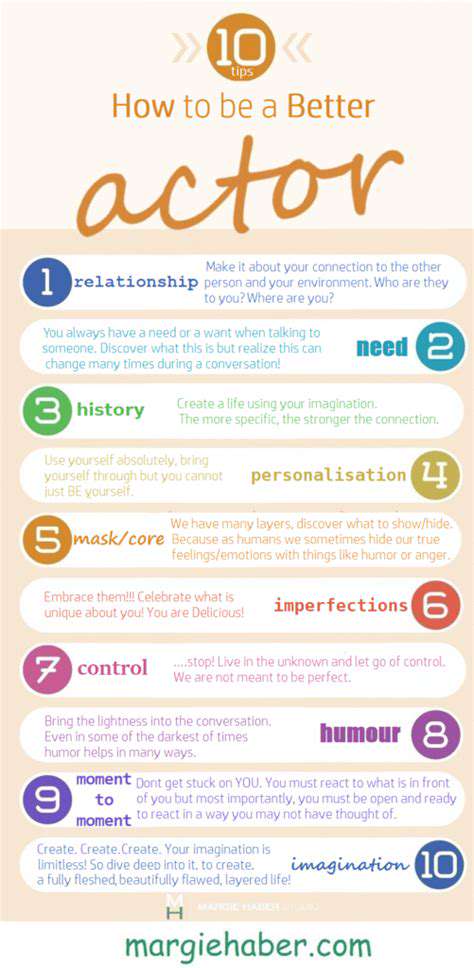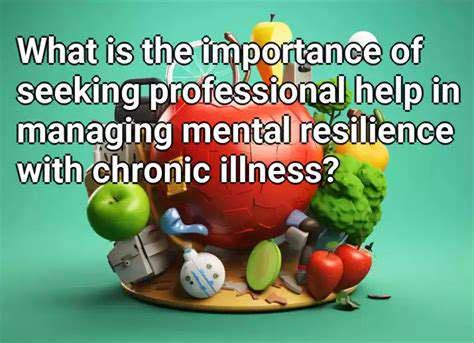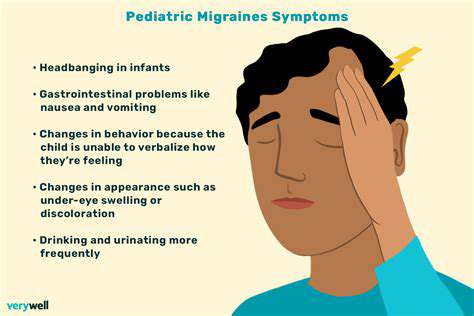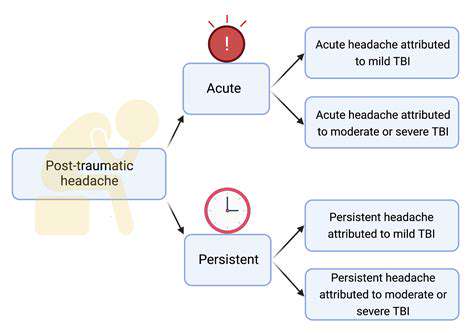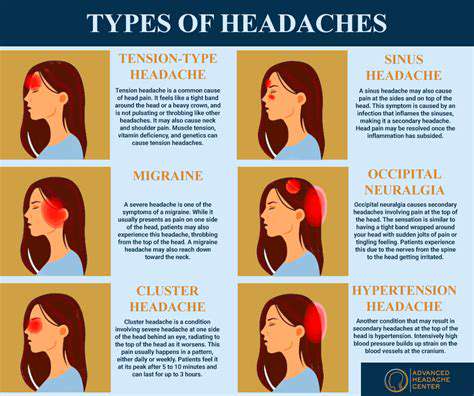Meditation and Mindfulness for Migraine Management
Mindfulness Techniques for Migraine Relief
Mindfulness Meditation for Migraine Prevention
Mindfulness meditation, a practice focused on present-moment awareness without judgment, can be a powerful tool for migraine prevention. By bringing your attention to your breath, bodily sensations, and thoughts without getting carried away by them, you can cultivate a sense of calm and reduce the triggers that often precede migraine attacks. Regular practice can strengthen your ability to identify and manage stress, a common migraine precursor, fostering a more resilient response to potential pain triggers.
Studies suggest that mindfulness meditation can help regulate the nervous system, reducing activity in brain regions associated with pain processing. This can lead to a decrease in migraine frequency and intensity over time. The practice fosters self-awareness, enabling you to recognize early warning signs of a potential migraine and implement coping strategies before the pain escalates.
Body Scan Meditation for Migraine Relief
Body scan meditation involves systematically bringing awareness to different parts of your body, noticing any sensations without judgment. This practice can help you identify areas of tension or discomfort that might be contributing to your migraine. By gently focusing on these sensations, you can release physical tension and reduce the pressure points that often precede or accompany a migraine attack. This mindful awareness can also help you identify stress and anxiety patterns in your body, which, in turn, can help mitigate migraine triggers.
As you become more attuned to your body's signals, you'll develop a stronger sense of self-regulation, allowing you to better respond to physical discomfort before it escalates into a migraine. This practice fosters a deeper connection with your physical self, empowering you to take proactive steps toward managing your pain.
Mindful Breathing Exercises for Migraine Pain Management
Mindful breathing techniques are crucial for managing migraine pain during an attack. By focusing on your breath, you can anchor your attention in the present moment and reduce the emotional and physical intensity of the pain. Deep, slow, and conscious breaths can help calm the nervous system and reduce muscle tension, both of which are often contributing factors to migraine pain.
Incorporating mindful breathing into your routine can help you develop coping mechanisms to manage the pain more effectively. Practice focusing on the sensation of the air entering and leaving your body, noticing the rise and fall of your chest or abdomen. This focused attention can help distract from the intensity of the pain and promote a sense of calm and grounding.
Mindful Movement Practices for Migraine
Gentle mindful movement practices, such as yoga or tai chi, can be incredibly beneficial for managing migraines. These practices combine physical postures and movements with mindful awareness, promoting relaxation and reducing stress. The controlled movements can help release physical tension and improve blood flow, potentially lessening the intensity of migraine pain.
Identifying and Managing Stressors for Migraines
Many migraine sufferers find that stress plays a significant role in triggering their attacks. Mindfulness techniques can help you identify and manage stress-inducing factors in your daily life. By paying attention to your thoughts, emotions, and bodily sensations during stressful situations, you can develop strategies to cope more effectively and reduce the likelihood of a migraine episode.
Through mindful awareness, you can learn to recognize the subtle signs of stress, such as muscle tension or racing thoughts, and implement calming techniques to prevent the escalation of these stressors. Developing a repertoire of stress-reduction strategies can be a crucial part of a comprehensive migraine management plan.
Applying Mindfulness in Daily Life for Migraine
Mindfulness isn't just about meditation; it's about cultivating a mindful approach to everyday activities. By bringing awareness to tasks like eating, showering, or engaging in conversations, you can reduce stress and improve your overall well-being, which can contribute to fewer migraine episodes. This mindful approach can extend to the choices you make about your environment, diet, and sleep, creating an overall supportive system for migraine management.
Integrating mindfulness into your daily routine, even for short periods, can significantly impact your ability to manage migraines. It's about fostering a more present and aware relationship with yourself and your body, which can help you navigate the challenges of migraine pain with greater resilience and well-being.
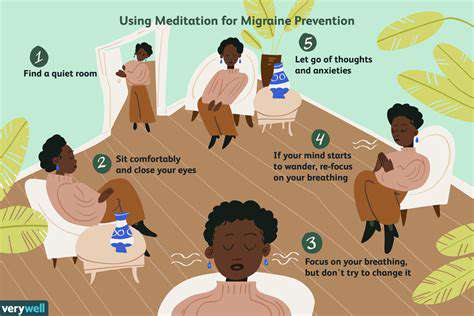
Integrating Meditation and Mindfulness into Daily Life

Cultivating Inner Peace Through Meditation
Meditation, a practice rooted in ancient traditions, offers a powerful pathway to cultivate inner peace and emotional well-being. By focusing on the present moment, we can quiet the incessant chatter of the mind and tap into a reservoir of calm and clarity within. This practice fosters self-awareness, allowing us to observe our thoughts and emotions without judgment. Ultimately, integrating meditation into our daily lives can lead to a greater sense of inner peace and resilience.
Mindfulness, a crucial component of meditation, involves paying attention to the present moment without getting carried away by thoughts or feelings. This practice allows us to experience the world around us with greater awareness and appreciation. By cultivating mindfulness, we can develop a deeper understanding of our own thoughts and emotions, leading to more balanced and fulfilling experiences.
Harnessing the Power of Focused Attention
A key aspect of meditation is developing focused attention. By directing our awareness to a specific object, like the breath, a mantra, or a visual image, we train our minds to resist distractions and cultivate concentration. This focused attention can be incredibly beneficial in daily life, enhancing productivity and reducing stress.
Consistent practice of focused attention through meditation helps to strengthen the mind's ability to resist distractions and stay present. This skill is valuable in various aspects of life, from work to personal relationships.
Focusing on the breath, for example, is a common meditation technique. This involves observing the sensation of the breath entering and leaving the body without judgment. This simple act of focusing on the breath can ground us in the present moment and calm our minds.
Exploring the Benefits of Regular Practice
Regular meditation practice offers a wealth of benefits for both mental and physical well-being. Studies have shown that meditation can reduce stress, anxiety, and depression, while promoting emotional regulation and resilience. Mindfulness meditation can also help manage chronic pain and improve sleep quality.
Understanding the Different Types of Meditation
There are numerous types of meditation practices, each with its own unique focus and approach. Mindfulness meditation, for example, focuses on observing thoughts and emotions without judgment. Transcendental meditation involves the use of specific mantras to quiet the mind. Loving-kindness meditation cultivates feelings of compassion and goodwill towards oneself and others. Each type of meditation offers a unique path to self-discovery and inner peace. Exploring different styles can help you find the approach that resonates most with you.
Integrating Meditation into Your Daily Routine
Integrating meditation into your daily routine doesn't require extensive time commitments. Even a few minutes of daily meditation can yield significant benefits. Start with short sessions, perhaps 5-10 minutes, and gradually increase the duration as you become more comfortable with the practice. Finding a consistent time and a quiet space, whether in your home or a quiet park, can significantly enhance the practice. Experiment with various techniques and find what works best for you.
Consistency is key to reaping the full rewards of meditation. Make it a non-negotiable part of your daily routine, much like brushing your teeth. This consistency will allow you to cultivate the benefits of meditation over time.
Seeking Professional Guidance

Understanding the Importance of Professional Guidance
Seeking professional guidance can be a crucial step in navigating life's complexities and achieving personal and professional goals. It acknowledges that sometimes, external perspectives and expertise are necessary to overcome challenges and make informed decisions. This guidance can provide clarity and direction, leading to more effective strategies and ultimately, better outcomes. Professional guidance can be sought in various areas of life, from career development and personal relationships to financial planning and health management.
Recognizing when professional guidance is needed is a sign of self-awareness and a commitment to personal growth. It demonstrates a willingness to invest in oneself and to leverage the knowledge and experience of others. A professional's insight can offer a unique perspective that can help you identify blind spots and develop solutions you might have missed otherwise.
Identifying Areas Requiring Professional Input
Many areas of life can benefit from professional guidance, including career transitions, relationship issues, financial planning, and mental health. When facing significant challenges or feeling overwhelmed, seeking professional support can be a powerful tool. This might include issues like navigating a difficult career change, resolving conflicts in a relationship, managing financial stress, or simply dealing with overwhelming emotions.
Identifying the specific area needing professional input is a crucial first step. This process involves recognizing your limitations and acknowledging that there may be effective strategies you are not readily aware of. Being able to articulate the specific problem or concern is essential in finding a professional who can offer tailored support.
Choosing the Right Type of Professional
Selecting the right professional is essential for receiving effective guidance. Different professionals possess different expertise, and choosing the right one for your specific needs is vital. Researching different types of professionals and understanding their areas of specialization can greatly improve the likelihood of finding a match. This process might involve researching therapists, financial advisors, career coaches, or other specialists.
Consider your needs and preferences when choosing a professional. Factors like their experience, qualifications, communication style, and approach to problem-solving can significantly impact the effectiveness of the guidance you receive. Doing thorough research and seeking recommendations from trusted sources can help in narrowing down your choices and selecting the perfect fit.
Benefits of Engaging with Professionals
Engaging with a professional can bring about numerous benefits. Improved problem-solving skills and a clearer understanding of your issues are two key advantages. Professionals can offer objective perspectives, helping you evaluate situations from different angles and develop more effective strategies. This objective assessment can lead to more productive and satisfying outcomes.
Increased self-awareness and confidence are also often reported benefits. Through the guidance and support of a professional, you can gain a deeper understanding of yourself, your strengths, and your weaknesses. This self-awareness can empower you to make more informed decisions and take control of your life.
Navigating the Process of Seeking Professional Guidance
The process of seeking professional guidance can feel daunting at first. However, it's a positive step towards personal growth and well-being. A great first step is outlining your goals and expectations for the relationship with the professional. This involves understanding the scope of work and what you hope to achieve through this process.
Being open and honest with the professional about your challenges and concerns is critical for building a strong and supportive relationship. This openness allows the professional to provide tailored and effective guidance. Communicating clearly and actively participating in the sessions will maximize the benefits of the professional support.
Sustaining the Positive Impact of Professional Guidance
The positive effects of professional guidance don't end once the initial sessions are complete. Maintaining the insights and strategies learned is key to long-term success. Integrating the acquired knowledge and skills into your daily life is important for sustaining the positive impact. This involves setting realistic goals and developing actionable steps to apply what you've learned.
Regular reflection and self-assessment can help you track your progress and make necessary adjustments. Seeking continued support or guidance as needed is also important to reinforce the positive changes. Remember that professional guidance is a journey, not a destination, and ongoing commitment is crucial for lasting results.
